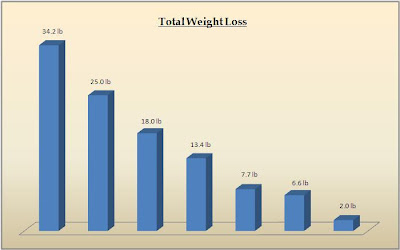This research has been out for a bit, but It has some fascinating information. There's been a ton of research the last few years about fructose and its implications for various health outcomes, with lots of competing hypotheses and conclusions. This won't be the final word, but in his article John White attempts to set some facts straight.
From the abstract:
Misconceptions about high-fructose corn syrup (HFCS) abound in the scientific literature, the advice of health professionals to their patients, media reporting, product advertising, and the irrational behavior of consumers. Foremost among these is the misconception that HFCS has a unique and substantive responsibility for the current obesity crisis. Inaccurate information from ostensibly reliable sources and selective presentation of research data gathered under extreme experimental conditions, representing neither the human diet nor HFCS, have misled the uninformed and created an atmosphere of distrust and avoidance for what, by all rights, should be considered a safe and innocuous sweetener.
One of the things I found interesting was Figure 1: Total per capita daily energy and change in percentage of total energy by nutrient food category:
It's pretty shocking to me how large the changes in caloric intake in the last 35 years has been, including the sources from which the energy is derived. Regardless of the fructose issue, we are getting WAY more energy from fats, flour, and cereal products than we were in 1970, as well as way more total energy.
White, John S.
Misconceptions about High-Fructose Corn Syrup: Is It Uniquely Responsible for Obesity, Reactive Dicarbonyl Compounds, and Advanced Glycation Endproducts? J. Nutr. 2009 139: 1219S-1227
For further updates, see the following:
The State of the Science on Dietary Sweeteners Containing Fructose: Summary and Issues to Be Resolved http://jn.nutrition.org/cgi/content/full/139/6/1269S
Finding:
It is difficult for consumers to identify the sweetener–fructose, glucose, sucrose, HFCS, or their mixtures–in a particular food, either naturally occurring or added. Therefore, it does not appear to be practical to base dietary guidance on selecting or avoiding these specific types of sweeteners. Furthermore, typical foods and diets seldom contain pure fructose or pure glucose but contain mixtures of different sweeteners. All of the naturally occurring sweeteners are caloric and consumers, on average, consume more energy than they expend. A simple message regarding the importance of consuming lower amounts of energy, including those from caloric sweeteners, seems to be the appropriate approach.
Fructose Ingestion: Dose-Dependent Responses in Health Research http://jn.nutrition.org/cgi/content/full/139/6/1246S
Findings:
- Moderate doses of fructose have neutral or diametrically opposite effects to those expected for very high or excessive fructose intakes and show evidence of improved glycemic control.
- There is reason to believe that moderate fructose ingestion could be beneficial for public health, whereas excess intake would be a risk to health. Practical applications will depend on further research on a wider range of health risk factors than those mentioned here.
- There is no international consensus on what is moderate and what is excessive fructose intake, although quantitative description from elsewhere is discussed.
- Epidemiological studies are difficult to interpret. The roles of GL and other factors collinear with fructose intake need to be examined.
- Intervention studies in humans often use fructose at doses that are excessive compared with amounts generally eaten by adults; such are not interpretable for purposes of public health policy in adult nutrition.
- There is scant information on the role of fructose dose in the health of young persons.
- Animal studies often use doses of fructose in excess of what humans would normally consume and so have a high potential to mislead about the public health aspects of fructose.
Basically, we don't know enough about fructose, or other sugars in general, and how each type specifically effects our health. This is shown in the following summary by researchers.
Dietary Sweeteners Containing Fructose: Overview of a Workshop on the State of the Science http://jn.nutrition.org/cgi/content/full/139/6/1210S
Finding:
All agreed that studies should be conducted that: 1) reflect current consumption data of both the total amount of fructose and its usual food sources; 2) measure the appropriate biochemical indices and health-related endpoints; 3) compare fructose, glucose, sucrose, starch, and HFCS; and 4) test the effects within a variety of populations, including those who are physically active and sedentary, are lean and overweight or obese, and who have diabetes, insulin resistance, and/or hyperlipidemia.
Update:
For a good discusion of this subject, including the addition of more recent research, see
Paleo Basics: Fructose Fact Vs. Fiction by Don Matesz.








